Media | Articles
Celebrate 70 Years of AMC with 10 of Our Favorite Cars
AMC was founded on May 1, 1954, when Hudson Motor Car Company and Nash-Kelvinator Corporation merged to better compete and survive against the Big Three. The plan worked, to an extent: AMC outlived Studebaker, Packard, and Kaiser-Jeep, the latter of which survived the longest, making it to 1970 before it was acquired by AMC. In 1987 AMC itself was purchased by Chrysler, and today only Jeep survives.
Over the brand’s 33-year run, it built family haulers, sports cars, off-roaders, and innovative compacts with a fraction of the resources of the Big Three, and the models often punched above their weight in performance and style. To celebrate the brand’s 70th anniversary, we’ve picked 10 of our top AMC models to highlight, in roughly chronological order, along with picks of our favorite variant from each model.
Marketplace
Buy and sell classics with confidence
AMC Ambassador
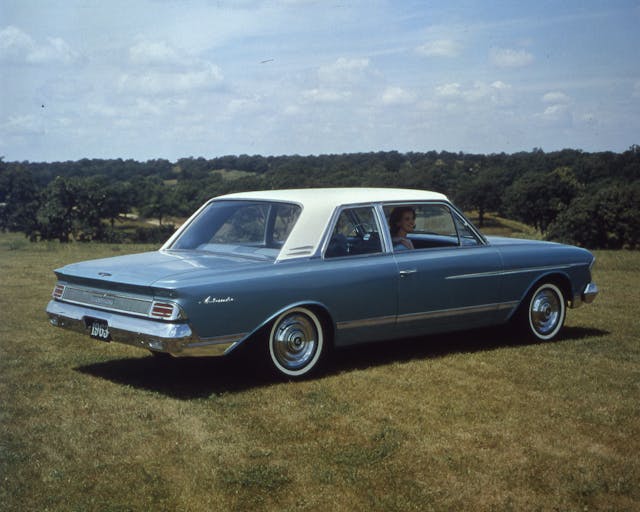
AMC’s full-size car was built in eight generations from 1958 to 1974 and could be had in a wide range of body styles, which often changed yearly, typical of its Big Three competition in that era. A rare sight at car shows, these big cruisers are bursting with style, as the Ambassador often served as the flagship model for AMC. In 1968, Ambassadors came equipped with standard air-conditioning while the feature was still optional across most of the industry, even on much more expensive models.
Our pick: While we love the funky, finned, ’50s four-door hardtop wagons, as well as the stylish two-door hardtops, we’ve got to go with the 1965–66 wagon. The interesting front-end treatment, with stacked headlights and horizontally mirrored grille, makes it look almost like a concept car. It was practically built for a Route 66 road trip. Besides, most of the rest of our picks are gonna be two-doors—we’ve got to be at least a little bit practical.
AMC Rambler American
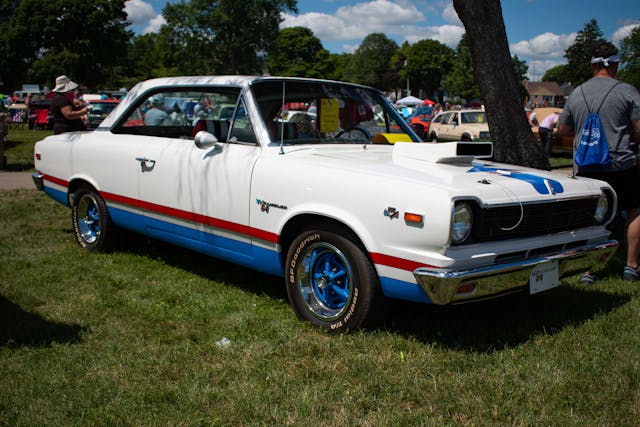
Built over three very different generations, the Rambler began as an elegant, sleek compact that stood out from the larger cars that were then dominating the market; it practically looked like a European import. The third generation introduced V-8 power to make a compact muscle car, the SC/Rambler, that would take on the sportier variants of the Dodge Dart, Ford Falcon, and Chevy Nova.
Our pick: The SC/Rambler with its red, white, and blue paint scheme is an easy choice, but we’ll go with some of AMC’s later models when it comes to patriotic color schemes. For our favorite Rambler, we’re gonna cheat a bit and pick an IKA Torino, which is what you get when Pininfarina gives this AMC a makeover. Built and sold by Industrias Kaiser Argentina and later Renault, the South American models were made famous thanks to their racing prowess. We’ll be honest, we wouldn’t care if they never took a checkered flag; we’re just interested in the looks.
AMC Rambler Marlin
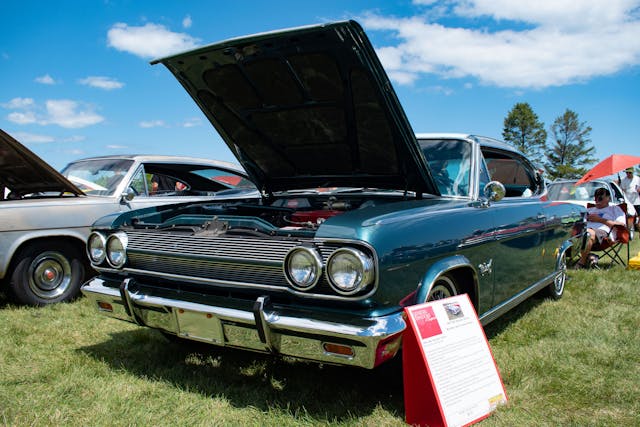
AMC’s midsize Rambler Classic spawned the fastback Rambler Marlin, whose sleek lines inspired Dodge to build the first-generation Charger. After just two years, Marlin moved to the larger Ambassador platform and kept the fastback design.
Our pick: We’re going to select the first-year Marlin, the 1965 model, which essentially serves as our favorite version of the Rambler Classic as well.
AMC Javelin
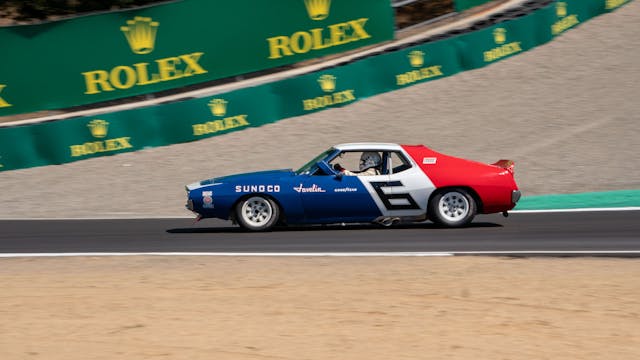
Whether it’s the rather understated early versions or the audacious, flared variants that came later, AMC’s take on the pony car is an attractive package. Like any good pony car, the Javelin was available with options to customize the style and performance, with several potent V-8 available. A blue, white, and red Javelin campaigned by Mark Donohue in 1971 brought the Trans Am championship to AMC for the first time, and in 1972, AMC nabbed driver George Follmer to repeat the performance.
Our pick: The one-year-only 1970 models featured a unique front end that is just different enough to notice from a distance. We’ll go with a 390 V-8 and a four-speed, in the red, white, and blue paint scheme that was the opposite orientation of the SCCA models.
AMC AMX
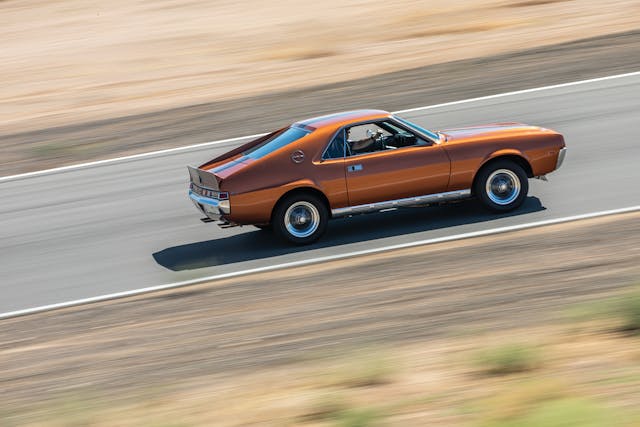
To create a two-door sports car and compete with Chevrolet’s Corvette, AMC shortened the Javelin and restyled it from the doors back. It’s a cost-cutting theme to which the company would return, but the AMX was arguably the best implementation of the strategy. AMC was proud to announce that the AMX started at less than $4000, the price of a loaded Mustang or Camaro. Production lasted from 1968 to 70, at which point “AMX” became an option package for the Javelin, then the Hornet, and eventually the Spirit.
Our pick: The AMX came standard with a V-8 and a four-speed with Hurst shifter, so pick your favorite AMC V-8, pick your favorite color, and go.
AMC Rebel

AMC’s mid-size follow-up, the Rambler Classic, filled a lot of roles as it was built in convertible, sedan, coupe, and wagon body styles. All of them look good, with interesting design cues like fenders and quarter panels with bulges to mimic the lines of their close-fitting bumpers, a design feature shared with the 1967–68 Ambassador.
Our pick: For style, it’s tough to beat the sleek looks of the 1967–69 hardtop, but we’ll still have to go with the 1970 Rebel Machine. It featured a 340-hp 390 V-8 that breathed through a sizable hood scoop and was available with a red, white, and blue paint scheme. It was loud, it was brash, and it was a solid performer thanks to a more powerful V-8 than even the AMX had. What’s not to love?
AMC Hornet
The compact Hornet sedan, successor to the Rambler American, was offered in two- and four-door variants when it debuted in 1970. A year later, it was joined by the Sportabout wagon, which AMC proudly claimed was “America’s only compact station wagon.” A sporty two-door hatchback joined the party in 1973. All of the body styles are rather attractive in their simplicity; perhaps that’s why we think they’ve aged so well. The muscular SC/360 version used a, you guessed it, 360 V-8 engine and was offered in muscle-car-appropriate colors and with a ram air induction system.
Our pick: While the most famous Hornet has to be the red hatchback from The Man With the Golden Gun (1974), the car that completed the miraculous corkscrew jump, we’ll take an earlier SC/360 model. How about a 1971 with the optional four-barrel, 285-hp engine with dual exhaust, four-speed manual, and 3.91:1 rear-axle ratio with Twin-Grip differential?
AMC Gremlin

AMC was used to being an underdog and doing a lot with a little. When it needed a more affordable, smaller car, it took the already compact Hornet, cut out 12 inches of wheelbase, and hacked off the rear to create the Gremlin. Sound familiar? Compared to the wonderfully proportioned AMX-GT concept that spawned the truncated subcompact, the Gremlin is a bit awkward. That doesn’t stop us from loving the odd little hatchback.
Our pick: Our initial thought was this wild, tracked Gremlin we spotted at SEMA in 2022, but how about something a bit more practical—a 1972 Gremlin X in Wild Plum? The 304 V-8 wasn’t a brutal powerhouse at the time, yet it was still punchy in the lightweight Gremlin. A modern tune-up with a decent cam and intake would make it a zippy runabout.
AMC Pacer
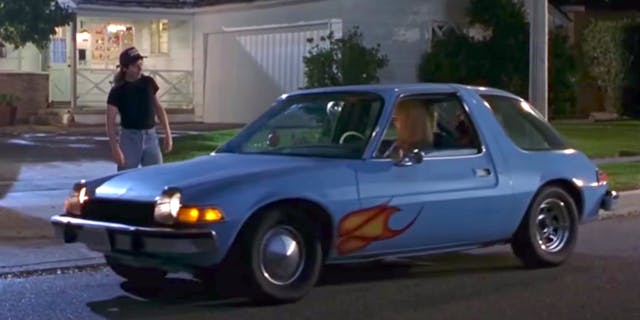
You can’t say that AMC was averse to taking risks. The Pacer offered unique, even strange styling with some practical benefits. The most oft-cited example is, of course, the passenger side door, which was longer than the driver’s to encourage rear-seat passengers to enter and exit on the curb side, where it was safer. The efficiently packaged interior offered fantastic visibility thanks to a greenhouse that used more window area. The car was also designed to be easy to repair.
Our pick: Our favorite Pacer has got to be the Mirthmobile, the only famous Pacer in existence. With a roof-mounted red rope licorice dispenser and a dash-mounted cup dispenser to go along with what appears to be an on-board water supply, it has tremendous road-trip potential.
AMC Eagle

These utilitarian sedans and wagons aren’t particularly eye-catching and would have blended in with plenty of their contemporaries if it weren’t for the fact that they rode a bit taller on their 4×4 suspensions. The drivetrain made them a precursor to the ubiquitous crossover and served to highlight AMC’s ambitious attempts to carve out new segments in the market. The Eagle sedans and wagons were based on the Concorde, the successor to the Hornet.
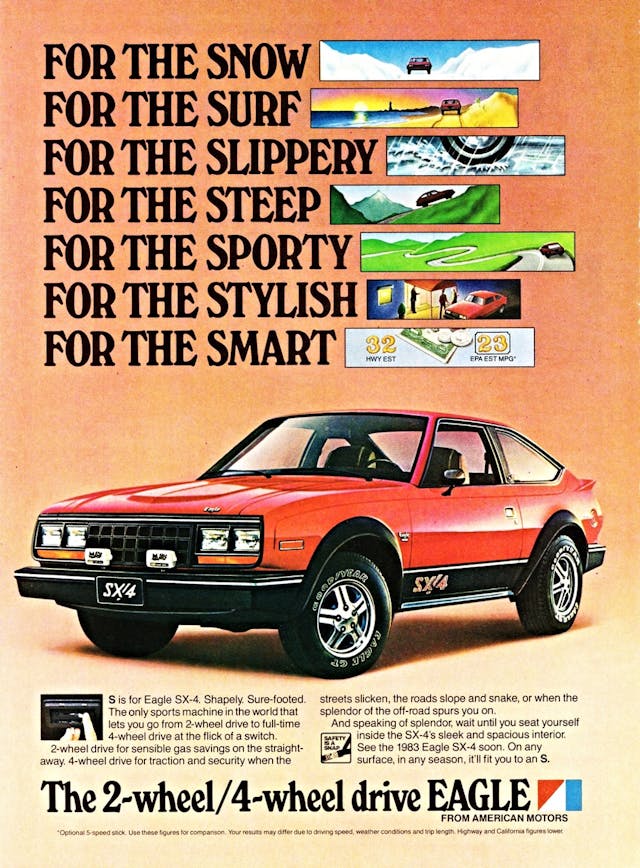
Our pick: The SX/4 three-door that was based on the smaller AMC Spirit is a rare sight today and would make for a fun rallycross-inspired toy.
Bonus:
XJ Jeep Cherokee

The XJ wasn’t branded as an AMC, but AMC was Jeep’s steward from 1970 to 1987 and the Cherokee was AMC’s largest contribution to the brand over that period, as most of the other models available were carryovers from Kaiser.
These boxy wagons weren’t the first compact SUV, although they set the stage for the future in several important ways. With lightweight unibody construction and a solid front axle with coil-spring suspension, the XJ Cherokee was maneuverable and capable off-road and had a decent ride on-road. Its quadra-link suspension made its way to the original Grand Cherokee in 1993 and TJ Wrangler in 1997. The Grand Cherokee was initially planned to replace the Cherokee, although strong sales kept the XJ in production until 2001 in the United States. Reskinned versions were on sale in China until 2014.
Our pick: A 1997–99 4.0-liter model to get the best of the upgrades that started in 1997 but the last of the high-pinion Dana 30 front axles.
This list had to be cut short, but we’ve managed to cover a pretty big swath of AMC’s lineup. Our favorites were biased toward the ’60s and ’70s, so let us know if we’ve overlooked your number-one AMC.
***
Check out the Hagerty Media homepage so you don’t miss a single story, or better yet, bookmark it. To get our best stories delivered right to your inbox, subscribe to our newsletters.







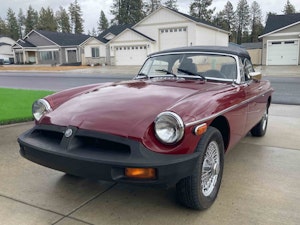
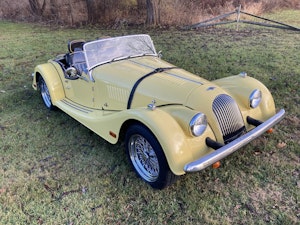

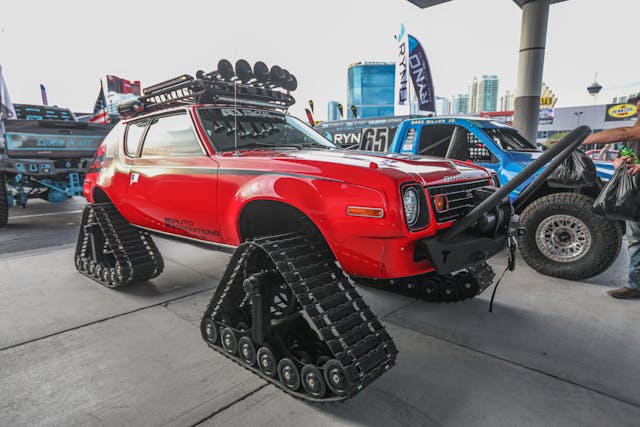








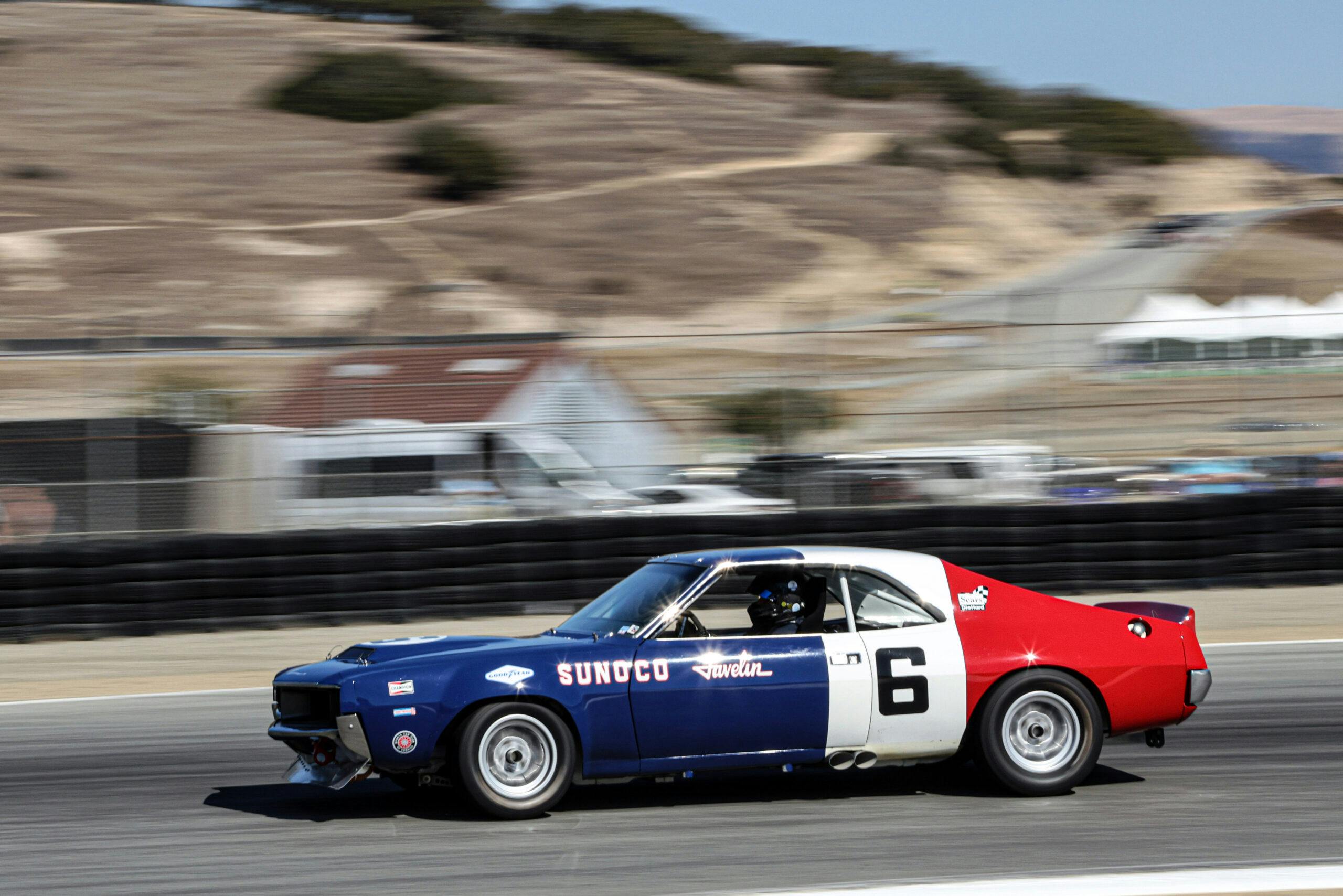
Umm……. May 1, 1954 was not 50 years ago. That’s a few months short of 70 years ago. Who on earth wrote that title?
Looks like you got their attention because that has been fixed! LOL
Go back to AMC’s roots and you’ll find 122 years of history. The Thomas B. Jeffery company was the SECOND US car maker to mass produce vehicles — one year behind Oldsmobile, one year AHEAD of Ford. They made 1500 of the same model in 1902. Jeffery became Nash in 1916 when Charles Nash left GM to buy Jeffery and make cars under his own name (first Nash branded model in 1917). Nash merged with Kelvinator in 1937 becasue Charles Nash wanted Kelvinator CEO George Mason as his successor when he retired. Mason liked where he was, so Nash bought Kelvinator and merged the companies. Nash bought Hudson out in 1954 and Nash/Hudson merged into AMC. AMC bought Jeep in 1970. Cash strapped by the fast changing 80s, Renault bought into AMC, then quickly became the controlling interest holder with 46% (I might be off a little on the percentage…memory…). AMC ceased to exist when Chrysler bought out Renault’s interest and traded Chrysler stock for all outstanding AMC stock, making it wholly owned by Chrysler.
My favorites are the 63-64 Ambassador and Classic — 63 line was MotorTrend’s Car of the Year. Ad the 64-69 American’s in with them — they are just slightly smaller versions of the same chassis and share many components. The Torino is a unique hybrid between the Classic and American. Classic middle, American front and rear, with some extra reinforcement for rougher conditions in Argentina. Used the Kaiser Jeep OHC six, which was sent to Argentina when the US public didn’t like it that much. IKA built other Rambler models as well, all powered by Kaiser engines. Earlier models used an Argentine version of the Kaiser/Continental flat-head six.
Only love for the Javelin and AMX.
I loved the Donahue edition.
The rest eh.
Jeep truck in the Honcho edition with Levi’s seats. Blue and gold paint and decals.
I don’t blame the headline writer for being stuck in 2004, given that it now looks like a simpler more desirable time to be in (for car fans, at least), but I’m afraid it’s 2024, and 2024 – 1954 is in fact 70 years, not 50…
Like AMC, I too am a product of 1954. Shaving off 20 years sounds like a perfectly good idea to me.
I concur!!
Remember when 50 was REALLY old?😂
I always thought the Eagle was a bold innovation, but I never saw them.
As I recall, some Ramblers from the 60’s had optional Venetian blinds
traded a VW fast back for a 72 Sportabout and it was a real upgrade over the VW and was. less expensive. still have a Grand Wagoneer daily driver, has to be favorite.
The AMC I’d like to have is the one made under license in Argentina. The IKA Torino was basically a Rambler American with Pininfarina restyled front and rear and a hot rodded AMC 6 cylinder engine with a four speed stick.
Love all of them.
But my favorites were the Hashes: 55-56 Hudson. 58 Rambler American. The beauty of the 67 Ambassador. The 78 Concord.
The ones in my family: Granny’s 60 Ambassador wagon [I threw a fit to find she had traded her 50 Pontiac for it until I saw the rear facing third seat. I was four years old.] 327 4BBL. Light pink with maroon roof. 62 Rambler Classic wagon. 71 AMC Gremlin. 72 Ambassador Brougham in 70s Cordoba Brown with contrasting vinyl top. Little bro’s 74 Hornet Sportabout.
I loved them all
We owned two Eagle Limiteds purchased new. They worked hard, played hard and never let us down. One went 250,000 miles before the engine got tired. Folks seemed to either love them or hate them. We loved ours. They were leading edge for their time.
The Marlin was not “mid-sized” It was based on the Classic/Ambassador body…so full size in the AMC lineup.
The Marlin was mid sized when it was a Classic 65 and 66 and full sized when it was an Ambassador 67.
Pedestrian article. ’57 Rebel, arguably an early muscle car, omitted.
Marlin- same body with the Ambassador front end in ’67. All the length was from the cowl forward. Like nearly all Ambassadors.
Size wise, they were intermediate, like Fairlane.
Finally an article featuring AMC. Thank you Hagerty. My favorite is the 1972 Javelin, of which I have owned two, with its honeycomb grille and grated rear lights. Beautiful! The gen one Javs were great but IMHO the second gens were the best. Overall I think all the models listed are cool, even the Gremlin and Pacer. The Marlin was downright sexy, especially the model with the two stick transmission. By the way, the headlines that I read do say 70 years. Again, well done.
I am a strong AMC fan. My first car was a ’64 Rambler Classic 770 with a 287 V8. I had an ’85 Eagle, which was practically indestructible until … I now have a ’72 Javelin and a ’74. Very happy with my AMC’s.
I saw Mark Donohue race an AMC Javelin at Road America in Wisconsin and thought that was the best pony car I ever saw. My Mom bought a red Gremlin X with a white interior and I could beat some lesser pony cars with it. Am still lusting for a Javelin to this day!
Hey Bob, I was flipping through the Hagerty newsletter when I came across this picture. My mouth dropped open. Mark Donahue was my cousin I remember going to his races when I was very little.this story Brought back great memories of my childhood. Thank you.
AMC always had to do more with less, so they came up with imaginative solutions. I think the article overlooks a couple of interesting models. For example, the ‘57 Rebel hardtop was one of the earliest “muscle cars” in that they stuffed a powerful V-8 into a relatively compact family car. It isn’t to everyone’s taste, but the front styling of the ‘61 Ambassador definitely stood our from the crowd. Where Hagerty chooses the ‘65-6 Ambassador, I find the styling of the ‘67 much more elegant, plus the ‘67 Ambassador-based Marlin had better proportions than the ‘65-6 Classic-based version.